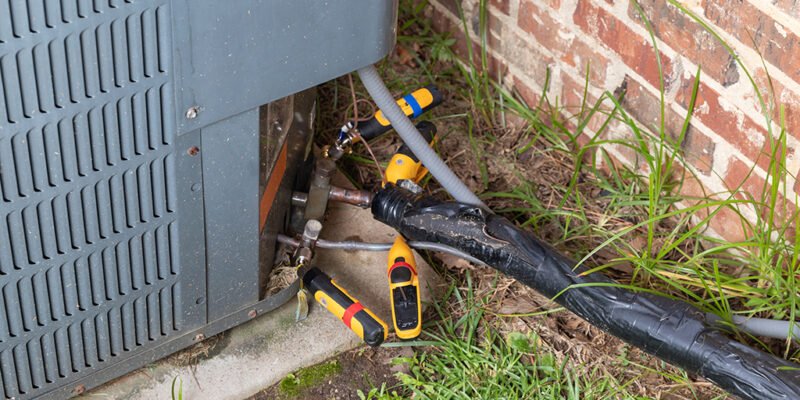Uncovering hidden AC issues during property inspections is crucial for homeowners and potential buyers. The air conditioning (AC) system, a complex interplay of coils, compressors, thermostats, filters, and vents, is central to indoor comfort. Optimal airflow, balanced refrigerant levels, and clean air filters are essential for an efficiently functioning HVAC system, ensuring cool air production.
However, disruptions such as leaks, clogs, or faulty thermostats can undermine this equilibrium, leading to compromised air quality, reduced efficiency, and potentially high costs. Overlooking issues like refrigerant leaks, dirty air filters, or malfunctioning evaporator coils can escalate into significant air conditioner problems, impacting comfort and finances.
Recognizing the value of comprehensive HVAC system inspections during property assessments is key to navigating these potential air conditioning repairs, ultimately contributing to a seamless and comfortable living experience. Join us as we explore these hidden culprits that could influence your AC’s performance and lifespan.
Understanding HVAC Systems
The HVAC system, short for Heating, Ventilation, and Air Conditioning, is the lifeblood of indoor comfort. It comprises essential components like the air conditioner (AC unit), evaporator coil, compressor, condenser, and air ducts that work harmoniously.
The AC unit, driven by the compressor, uses refrigerant to cool and circulate air within the air conditioning system. An air filter prevents dirt and debris from clogging the system, optimizing airflow and maintaining a healthy environment. The thermostat acts as the control center, regulating the desired temperature.
Understanding this complex interplay is crucial to troubleshooting potential air conditioning problems effectively and ensuring a consistent cool airflow throughout the ductwork. Regular maintenance by a skilled technician is key to preventing issues and maintaining peak performance.
How to Check Your Air Conditioner for Issues
When inspecting your air conditioner during a property evaluation, paying close attention to its physical condition is paramount.
- Begin by examining the airflow – a vital factor indicating the AC unit’s efficiency.
- Check for common malfunction causes, like a broken air conditioner that might result in air blowing warm instead of providing the expected cooling effect.
- Assess the contrast between the indoor and outdoor air, ensuring the air handler effectively regulates the air inside your home.
- Low airflow can be a red flag, hinting at potential problems hindering cold air delivery.
Prioritizing this inspection can save you from unexpected issues and ensure a well-functioning AC system, promising a more comfortable indoor environment.
Check Your AC’s Refrigerant Levels and Leaks
One of the most common air conditioner problems is low refrigerant levels. Refrigerant is the substance that cools the air in your AC unit, and if it leaks or runs low, your home will not be cooled properly.
To check for refrigerant leaks, you can look for signs such as ice buildup on the coils, hissing or bubbling noises, or oil stains on the floor or walls near the AC unit. You can also measure the air temperature from the vents and compare it to the temperature setting on your thermostat. You may have a refrigerant leak if the air blows warm or not cool enough.
Check Your AC’s Air Filters
One of the most common air conditioner problems is a clogged air filter. A dirty or clogged air filter can reduce airflow and affect indoor air quality. It can also make your air conditioning unit work harder and less efficiently, leading to higher energy bills and wear and tear. To avoid these issues, you should inspect your air filter regularly and replace it when needed. Here are some signs that your air filter needs attention:
- The air coming from the vents is weak or not cool enough.
- The air conditioner is blowing warm air or making loud noises.
- The indoor air feels dusty or smells bad.
- The energy bills are higher than usual.
To inspect your air filter, turn off your air conditioner and locate the filter. It is usually located in the return duct or near the blower unit. You should check the filter for visible dirt, dust, or debris.
Check Your AC’s Evaporator Coils
One of the common reasons why your AC may not cool your home effectively is the condition of the coils. The coils are part of the indoor and outdoor units that transfer heat and cool the air. The evaporator coil is located inside the unit in room air conditioners, while the condenser coil is on the back. In central air conditioning systems, the evaporator coil is inside the indoor unit, while the condenser coil is in the outdoor unit.
The AC condenser releases heat to the outside, while the evaporator coil absorbs heat from the indoor air. If either of these coils is dirty, damaged, or blocked, it can affect the performance and efficiency of your AC and indoor air quality.
Check the Room’s Thermostat
One of the things you should check when inspecting a property is the thermostat. The thermostat controls the temperature and operation of the central air conditioner. If the thermostat is not working properly, it can cause the air conditioner to run inefficiently. Here are some tips on how to check the thermostat for accuracy and proper functioning:
- Make sure the thermostat is set to the correct mode (cooling or heating) and temperature. If the display is blank or dim, it may indicate a low battery or a problem with the wiring.
- Check the circuit breaker that powers the thermostat and the air conditioner. If it is tripped or blown, reset or replace it and see if the thermostat works.
If you notice that the thermostat is inaccurate, unresponsive, or erratic, you may need to replace it with a new one. A faulty thermostat can waste energy and money and damage your air conditioner.
Check Your AC’s Airflow and Ducts
One of the most common AC problems that homeowners face is poor airflow. This can affect the comfort and efficiency of your air conditioner and indoor air quality. Look for the following signs of refrigerant leakage during your property inspections: hissing sounds or ice buildup on the evaporator coil.
There are several possible causes of poor airflow. Still, one of the most important factors to check is the condition of your air ducts. The air ducts are responsible for delivering cool air throughout your home. However, they can accumulate dust, debris, and mold over time. This can restrict the airflow and create health hazards for you and your family. That’s why it’s essential to have your air ducts inspected and cleaned regularly by a professional.
Another sign that your air ducts may have issues is if your AC starts blowing warm or hot air. This could indicate a refrigerant leak in your system, which reduces the cooling capacity of your AC. Refrigerant is a substance that absorbs heat from the indoor air and transfers it outside. If the system has insufficient refrigerant, your AC won’t be able to cool your home effectively. A refrigerant leak can damage your compressor and other AC components, leading to costly repairs or replacements.
Conclusion
A comprehensive AC inspection during property assessments is indispensable. Regular check-ups, ideally by an HVAC company, ensure your system operates optimally. If overlooked, issues like a dirty blower motor or clogged filters can gradually escalate, eventually leading to your AC unit blowing warm air or failing altogether.
Fortunately, many problems are preventable with proactive maintenance. Timely attention to airflow, filter cleanliness, and addressing malfunctions can significantly prolong your air conditioner’s lifespan and maintain indoor comfort. Don’t wait for problems to escalate; a little care today can save you from major headaches and discomfort down the line.
About the author
Shelby Bartz is the new Content Editor of Precision Air & Plumbing, a full-service HVAC, plumbing, and home performance contractor operating in Chandler, Arizona. Shelby is a devoted bookworm but when she isn’t reading, you’ll find her cruising around town with her beloved ginger husky, Maxxy.













Comments